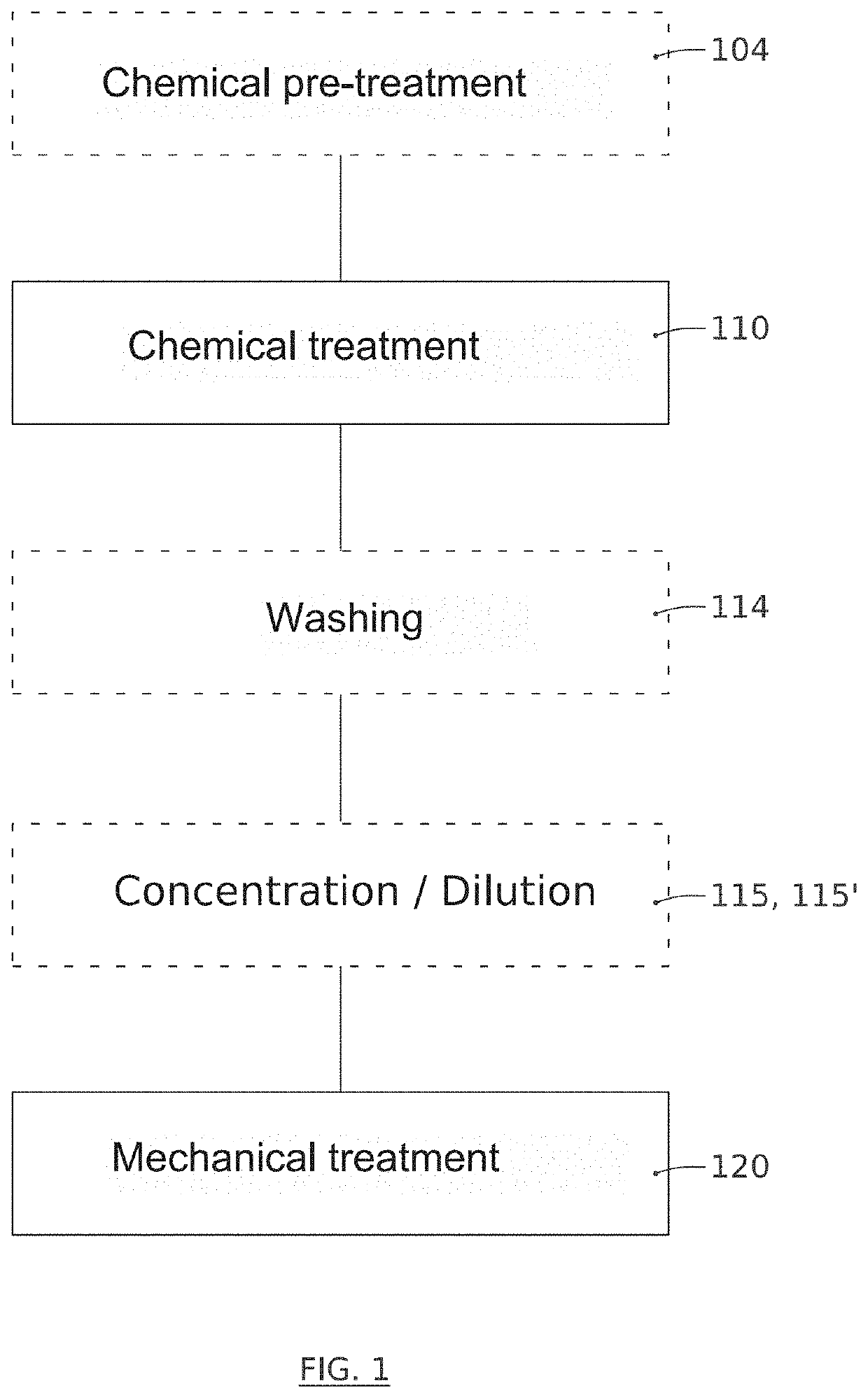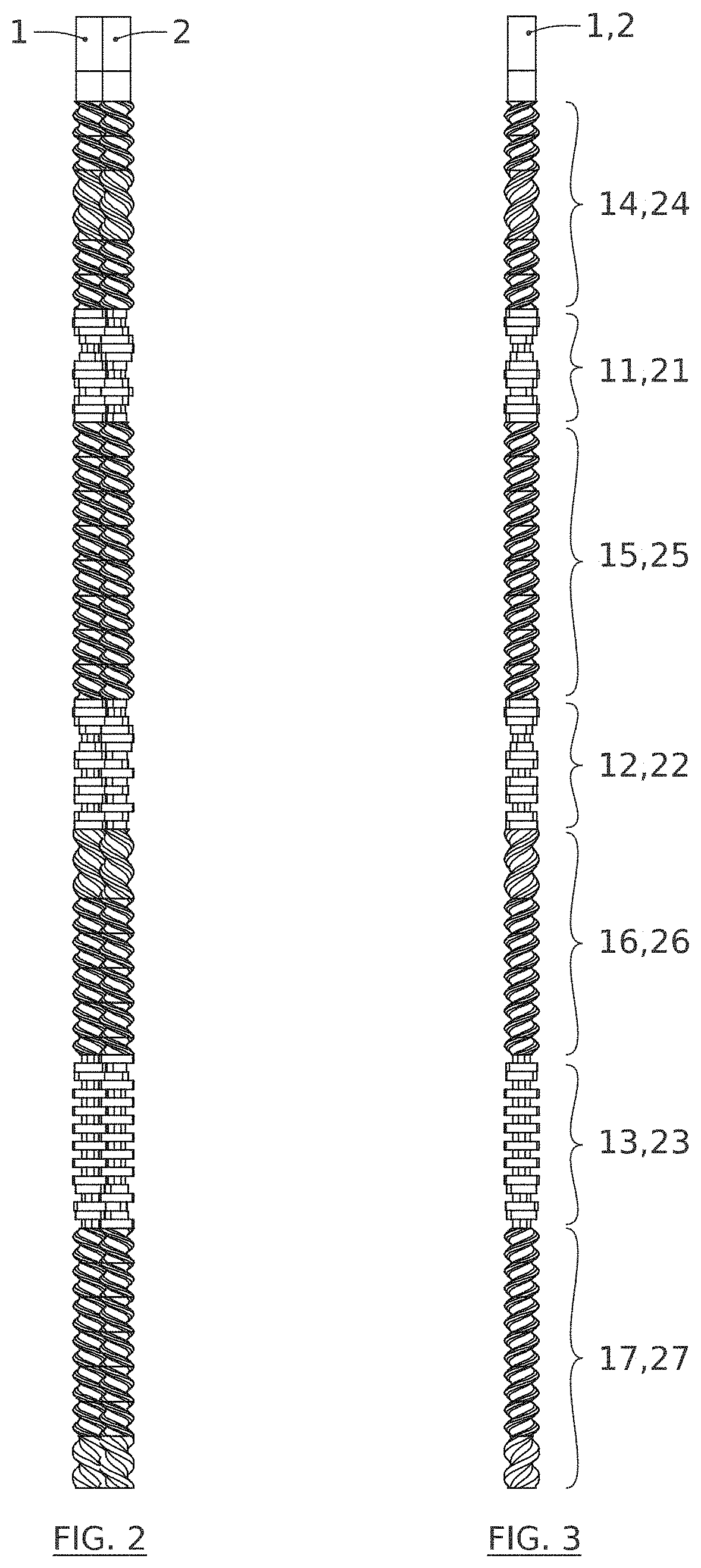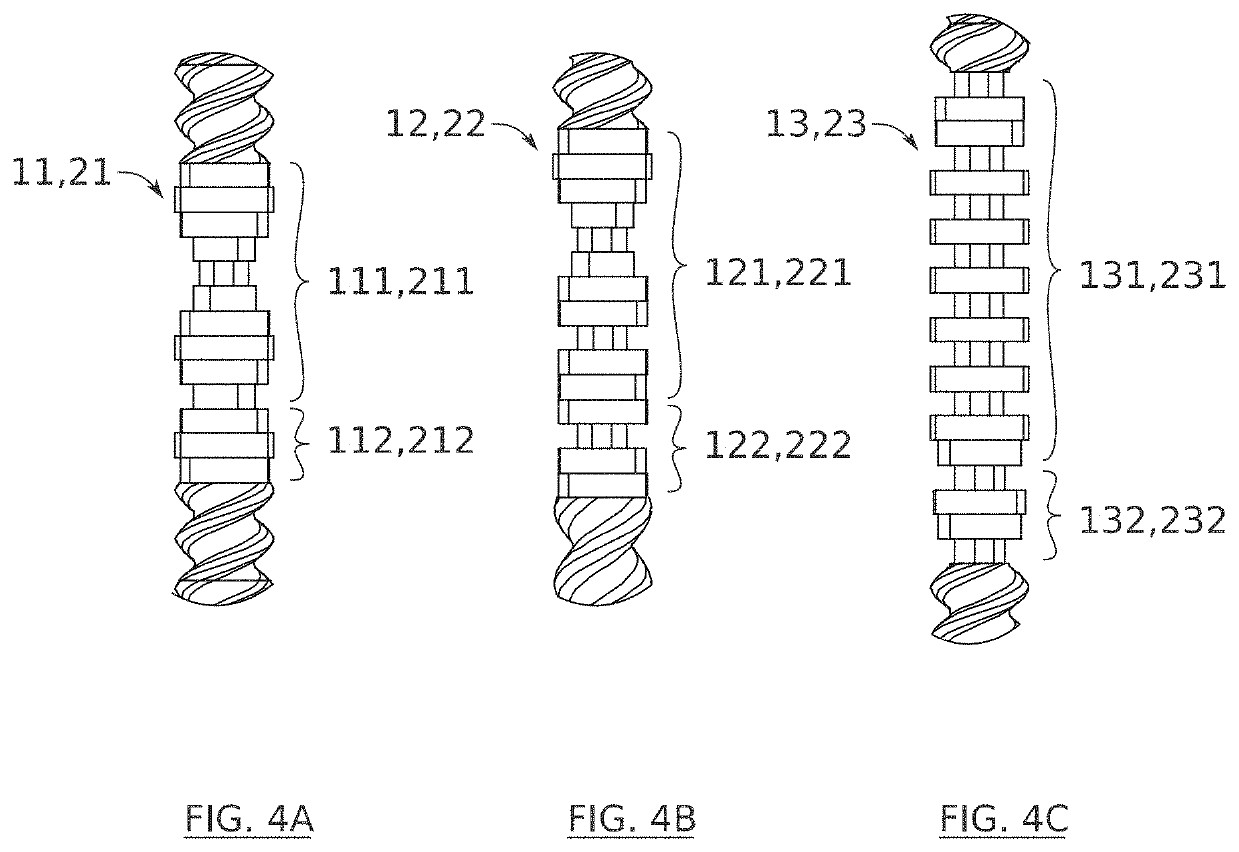Method for manufacturing a suspension of cellulose nanofibrils
a technology of cellulose nanofibrils and cellulose micro-nanobrils, which is applied in the field of production of cellulose micro-nanobrils, can solve the problems of difficult water removal, low quantity produced, and unrealistic industrialisation of this method, and achieves the effects of low production cost, low production cost and high dry matter conten
- Summary
- Abstract
- Description
- Claims
- Application Information
AI Technical Summary
Benefits of technology
Problems solved by technology
Method used
Image
Examples
Embodiment Construction
[0058]The term “cellulose” or “cellulose fibres” means a polysaccharide that forms the main constituent of the cell wall of the plant tissues and that participates in their support and in their rigidity. The cellulose comes from wood (which forms the main source of it), cotton (of which the fibres are almost pure cellulose), flax, hemp and other plants. It is also a constituent of several algae and a few fungi.
[0059]The term “cellulose micro / nanofibrils” or “micro / nanocellulose” means a heterogenous nanomaterial comprised of elements of a micrometric size (fragments of fibres) and of at least 50% by number in nano-objects (i.e. objects of which at least one of the dimensions is located between 1 and 100 nanometres). This nanomaterial has the form of a collection of isolated cellulose micro / nanofibrils or of beams of micro / nanofibrils derived from a cellulosic raw material, from cellulose or from cellulose fibres. There are many synonyms widely used for cellulose micro / nanofibrils: n...
PUM
| Property | Measurement | Unit |
|---|---|---|
| degree of polymerisation | aaaaa | aaaaa |
| temperature | aaaaa | aaaaa |
| temperature | aaaaa | aaaaa |
Abstract
Description
Claims
Application Information
 Login to View More
Login to View More - R&D
- Intellectual Property
- Life Sciences
- Materials
- Tech Scout
- Unparalleled Data Quality
- Higher Quality Content
- 60% Fewer Hallucinations
Browse by: Latest US Patents, China's latest patents, Technical Efficacy Thesaurus, Application Domain, Technology Topic, Popular Technical Reports.
© 2025 PatSnap. All rights reserved.Legal|Privacy policy|Modern Slavery Act Transparency Statement|Sitemap|About US| Contact US: help@patsnap.com



